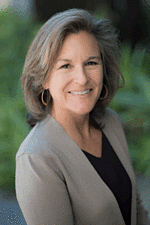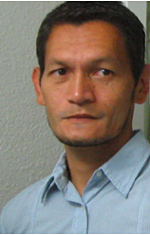In utero exposure to environmental chemicals can adversely impact pregnancy outcomes and childhood health. However, there is much we do not know about current exposures to industrial chemicals as current technology focuses on biomonitoring about 350 chemicals. In contrast, there are about 8,000 high volume chemicals produced or imported in the US, with an estimated 2,000 new chemicals being introduced each year. Given that more than 30,000 pounds of chemicals are manufactured and imported for every American, we anticipate exposures to many more chemicals than we are measuring.
To better understand human exposure to industrial chemicals, the Program on Reproductive Health and the Environment at UCSF used an innovative approach to screen for novel chemicals in pregnant women’s blood. They found an average of 56 suspect chemicals among their sample of 75 pregnant women and confirmed the presence of six novel chemicals. Two of these six chemicals – 2,4-Di-tert-butylphenol and pyrocatechol – are high production chemicals. This approach can help us identify and prioritize a broader range of chemical exposures in the human population.
Featured Speakers
 Professor Tracey J. Woodruff, PhD, MPH, UCSF is a recognized expert on environmental pollution exposures during pregnancy and effects on prenatal and child health as well as on her innovations in translating and communicating scientific findings for clinical and policy audiences. Before joining UCSF, Tracey was a senior scientist and policy advisor for the U.S. EPA’s Office of Policy. For more information on her work, visit www.prhe.ucsf.edu, or follow on Twitter @UCSF_PRHE.
Professor Tracey J. Woodruff, PhD, MPH, UCSF is a recognized expert on environmental pollution exposures during pregnancy and effects on prenatal and child health as well as on her innovations in translating and communicating scientific findings for clinical and policy audiences. Before joining UCSF, Tracey was a senior scientist and policy advisor for the U.S. EPA’s Office of Policy. For more information on her work, visit www.prhe.ucsf.edu, or follow on Twitter @UCSF_PRHE.
 Roy Gerona, PhD, is Assistant Professor in the Department of Obstetrics/Gynecology and Reproductive Sciences at the University of California, San Francisco. Dr. Gerona specialized in biochemistry and clinical chemistry during his graduate and post-graduate training, respectively. He currently runs and directs the Clinical Toxicology and Environmental Biomonitoring Laboratory and the TB Hair Analysis Laboratory at UCSF. He divides his time in three research areas: environmental biomonitoring, new psychoactive substance analysis and surveillance, and MDR-TB therapeutic drug monitoring. In biomonitoring, his laboratory specializes in developing targeted quantitative methods for measuring endocrine disrupting chemicals in various biological matrices. His laboratory has also pioneered the development of suspect screening analysis of environmental organic acids in serum using liquid chromatography- quadrupole time-of-flight mass spectrometry.
Roy Gerona, PhD, is Assistant Professor in the Department of Obstetrics/Gynecology and Reproductive Sciences at the University of California, San Francisco. Dr. Gerona specialized in biochemistry and clinical chemistry during his graduate and post-graduate training, respectively. He currently runs and directs the Clinical Toxicology and Environmental Biomonitoring Laboratory and the TB Hair Analysis Laboratory at UCSF. He divides his time in three research areas: environmental biomonitoring, new psychoactive substance analysis and surveillance, and MDR-TB therapeutic drug monitoring. In biomonitoring, his laboratory specializes in developing targeted quantitative methods for measuring endocrine disrupting chemicals in various biological matrices. His laboratory has also pioneered the development of suspect screening analysis of environmental organic acids in serum using liquid chromatography- quadrupole time-of-flight mass spectrometry.
This webinar is one in a monthly series sponsored by the Collaborative on Health and the Environment’s EDC Strategies Partnership. The CHE EDC Strategies Partnership is chaired by Carol Kwiatkowski and Katie Pelch (TEDX), Sharyle Patton (Commonweal Biomonitoring Resource Center), Jerry Heindel (Commonweal Program on Endocrine Disruption Strategies), and Genon Jensen (HEAL) and coordinated by Maria Williams (Collaborative on Health and the Environment, a Commonweal program). To see a full list of past calls and webinars related to EDCs and listen to or view recordings, please visit our partnership page.
This webinar was moderated by Sharyle Patton, Director of the Commonweal Biomonitoring Resource Center. It lasted for 40 minutes and was recorded for our call and webinar archive.
